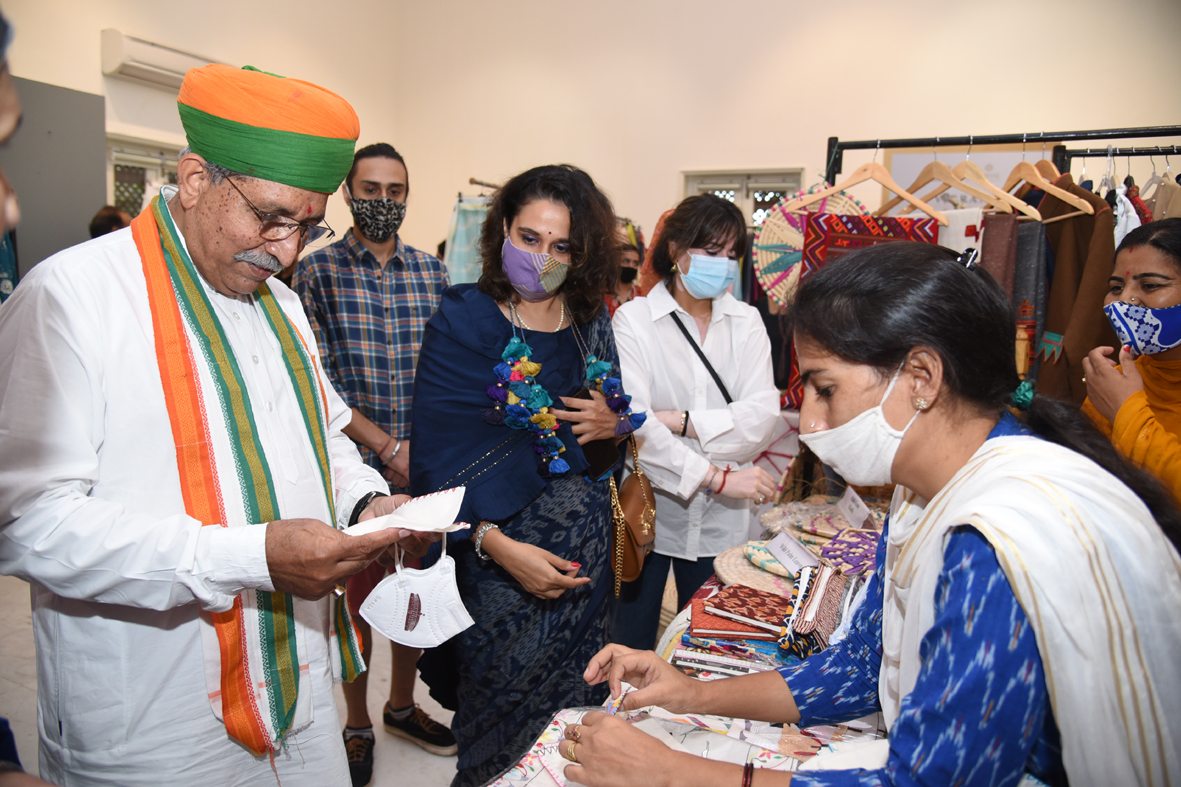Nishikant Khajuria
Adding `Beti Kamao’ (employ a woman) to Prime Minister Narendra Modi’s campaign`Beti Bachao, Beti Padhao’ (save a girl, educate a girl), a United States based non-profit organization is facilitating women folk of Jammu hilly areas and Himalayan regions to promote their hand made products at the national and international market thus providing them employment and boosting up their confidence.
This San Francisco based `Giri Foundation’ is providing these mountain women the market knowledge, exposure and then discovering and reaching out to a huge audience of consumers who are willing to give these artisans rightful profit for their products with no middleman.
The Foundation is working to have the products made by these woman artisans become globally recognized by evaluating them on the international market. Its mission is to give employment to at least one million women in the mountains of India by 2025.
By helping these artisans reach a global market, this non-profit organization is not only giving employment to women folk but also reviving fading arts like Basholi painting, making of `Binnaa’ and `Chabhari’ etc and bringing these back to existence. They showcase arts of these women at different platforms around the world in ways that would help these women revive these arts besides generating income for them.
In this connection, the organization recently brought four craft clusters from the hills of Jammu, Himachal and Uttrakhand to participate in the grand two day handicraft exposition Royal Fables, held at Bikaner House, New Delhi. The participating craft clusters included `Nari Ki Pehchaan -a Self Help Group of Umeed, the cluster from Jammu engrossed in creating mats and bowls woven with threads made from grass and `Project Purukul’ that is recreating the magic to hand tucked quilts, bags, tea cozies and diaries. These women showcased their stuff at the exhibition, with the exhibited price of the product for which it was accounted for, without partying the profits with the middlemen.
This exhibition was also greeted by some local royal families who had the opportunity to procure these efficient products from diligent and skilled women. All the SHGs were thrilled with the appreciation they elicited for their work. Meeting the Union Minister of Culture, Arjun Ram Meghwal and prominent dignitaries added to the entire experience. This trip to Delhi was the step towards creating market opportunities for these woman artisans in environments that also expose them to the design sensibility prevailing in the urban markets.
Founded by Megha B Purohit from Katra in Jammu and now settled in San Francisco, USA, Giri Foundation is creating a cluster community of women who practice rare and near extinct crafts, hoping to empower them through skill training, market creation and retail opportunities. “Handicraft is the second largest employment generator in the rural areas of the Himalayan region and crafts born there are unique and linked to the soil. I feel humbled that groups spearheaded by dynamic women came with us,” said Megha, who knows firsthand the unique hurdles faced by women of the hills.
Through this initiative, Megha is also reviving the fading arts, such as the famous Basholi painting, the traditional folk art of Basohli and one of the most prized heritages of the hills. Another piece of peculiar art, she is bringing back, is the age old art of preparing `Binnaa’ and `Chabhari’, which are made up of wild grass and palm leaves. Chabhari is a traditional tray or container that is used to store and serve things on, to guests and family member. Binna was in past used by home members to sit on, in the traditional way.
Traditional grass handicrafts are considered to be major avenue of the cultural heritage in the rural areas of Jammu & Kashmir, transferred from one generation to the other. It is an artisanal work where useful and decorative products are made completely manually, using simple tools only and raw material like grass, palm leaves which are easily available. Many women were involved in this work in an unorganized way and generally used to make them for domestic use and if at all sold it was at a abysmally low rate. However, due to the marketing of these eco-friendly products with the help of organizations like Giri Foundation, they can fetch higher prices now.
The Foundation is aiming to bridge the gap perceived over the year and facilitate more products Made in India to outside the market and market them with a globally recognized entity. “As though the Foundation is based in San Francisco, we are aiming to evaluate a great amount of market in that region to give the Indian handmade products a sense of social standing and our proficient women an acknowledgement and encroachment for their handwork and artistic perseverance, alongside spreading awareness of the cultural and ethical aspects of India globally,” said Megha.
“We firmly believe that every woman of the mountain should get an adequate opportunity to showcase her skill and earn her deserved percentage. It not only helps in empowering today’s women but also boosts up their confidence, moreover benefits their skill set and also overpowering the practice of disdain and despair conflicted on the women of our society,” she added.
Trending Now
E-Paper


